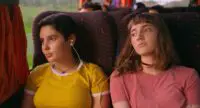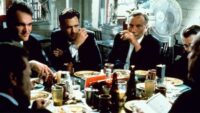My mom’s family comes from a small town in western Pennsylvania. It’s a coal mining town with two stoplights where everyone knows everyone else. Nestled on the edge of town is the Skyview Drive-In. It opened in July of 1948, and it was my first drive-in experience. I don’t remember the name of the movie I saw (I was young, so I likely didn’t make it to the double feature), but I do remember the thrill of piling into a car to watch a movie in a field under the stars. Purists would say that a drive-in isn’t the best way to watch a movie. The audio is crackly (it comes over the car’s radio), the picture quality isn’t always pristine, and the sounds of the real world (like a train whistle) interrupt the films. However, there’s something magical about the experience that simply cannot be replicated in a movie theatre. When I heard Back to the Drive-in was a documentary about modern drive-ins, I knew it would remind me of my childhood.
The Skyview Drive-in is not singular in its nostalgic charm. That much is immediately evident in this new documentary from director April Wright. If I squint, any of the drive-ins featured in this documentary could look like the one from my youth. There’s the same weathered snack shack, the poles jutting out of the pavement or grass, and the intangible warmth that exudes from these places. As evidenced in this documentary, a lot of drive-ins are family-run businesses.
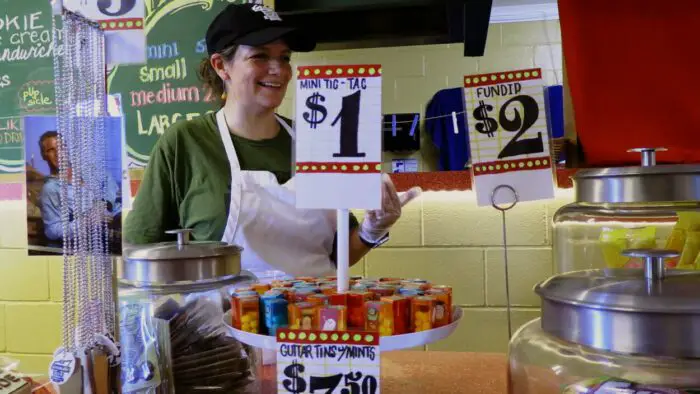
Back to the Drive-in is a simple paint-by-numbers documentary. In terms of using the medium to advance or elevate the theme and story, there’s room for improvement. The story follows each of these drive-ins for what seems like the course of one night. The concept works in theory because it allows the audience to compare and contrast how each functions in their different cities with all of their varying demands. However, aside from some fog, all of the showtimes go off without a hitch.
The number of drive-ins available to explore in a documentary context is very small, for as difficult as big-chain theatres have found recent years to be, drive-ins have been hit even harder. Many of the owners featured mention how COVID-19 has impacted their business. On the one hand, they saw a surge in business when drive-ins were one of the only ways to watch films in 2020. On the other, they’re facing supply chain woes, staffing issues, and lower-than-average attendance numbers. Interestingly, almost every owner mentions increased hostility from patrons. Prior to COVID, owners rarely experienced patrons mistreating their employees, but something about quarantine changed people.
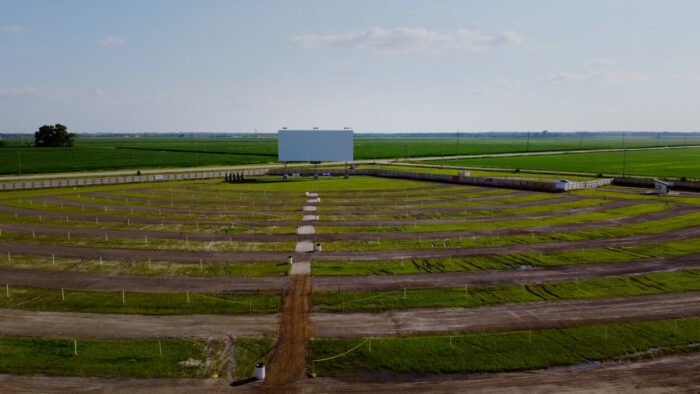
Back to the Drive-in’s weak point is its fairly surface-level reflection on this beloved form of viewing movies. The first drive-in dates back to 1915, and the business reached its heyday in the 1950s. In a world where people can watch a movie on their phone, the fact that drive-ins exist at all is miraculous. Back to the Drive-in briefly touches on the storied history of this business, but the miraculous nature of the drive-in’s existence should come through the owners and the teens working there. The owners in the film vaguely allude to their own history with drive-ins and the struggles they’re currently facing, but the audience can feel them holding back. It’s not enough to simply put a spotlight on these people and their drive-ins. Viewers want to get to know the owners. What movies made them laugh, cry, and fall in love with filmmaking? Why do they continue, despite the challenges they face? All of the owners featured clearly have passion, but that doesn’t come across in the documentary.
Jean Epstein, the French filmmaker, fully developed the term photogenie. It’s the ineffable essence of cinema. For as long as film critics and theorists exist, there will never be an all-encompassing definition of what makes movies the impossible-to-describe magic show that they are. Back to the Drive-in captures the community that is born out of viewing film in this specific way. A drive-in transcends beyond film lovers to anyone looking for a new experience. What’s special is that it exists as a both nostalgic and modern destination. There are people who grew up in its heyday who can return to a place that’s both familiar and new while bringing along younger generations who have never experienced an outdoor movie. That same familial connection is evidence in the ownership as well. They’re building a business that their children can inherit.
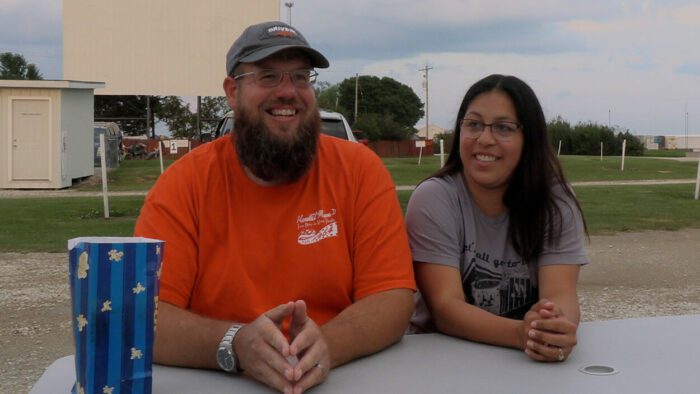
People have been talking about the inevitable failure of the movie theatre, but there’s optimism in the owners featured in Back to the Drive-in. The same way the last generation of drive-in owners faced the emergence of color TV and at-home media, this new generation will face the streaming era. One thing’s for certain; the drive-in experience is unduplicable. The documentary ends with one final message: Support your local drive-in.
Back to the Drive-In, directed by April Wright, is available on video on demand March 13, 2023.


